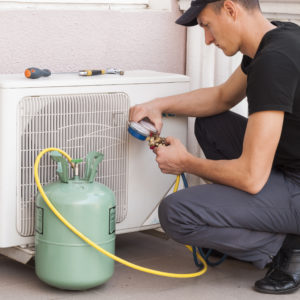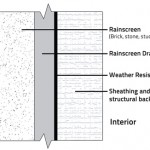 It’s a good time to revisit the looming end of continued HCFC-22 refrigerant production, or R-22 as it’s better known. If you’re an HVAC technician or contractor, you’re in a prime position to help educate your customers and prospective clients on the need to start preparing for the transition.
It’s a good time to revisit the looming end of continued HCFC-22 refrigerant production, or R-22 as it’s better known. If you’re an HVAC technician or contractor, you’re in a prime position to help educate your customers and prospective clients on the need to start preparing for the transition.
Here’s a quick look at everything you need to know about the end of R-22.
R-22 regulation recap
For most of the last decade, the production of R-22 has been in decline, due to increasing global regulations aimed at limiting its usage. The reason? R-22 is considered an ozone-depleting substance (ODS), and one of the worst offenders to boot.
As of January 2017, only certified reclaimers or technicians have been able to purchase ODSs, and as of January 2018, all technicians working with ODSs have been required to pass a specific certification exam, among other requirements. In 2019, technicians can expect more changes: A new leak rate table will need to be followed, along with more regular leak inspections.
Most importantly, 2019 will also be the final year of new R-22 production. Starting in 2020, all production and importing of R-22 will be eliminated, and only reclaimed R-22 refrigerant will be available for servicing older HVAC units.
What the end of R-22 means for your customers
With the end of new R-22 production, many analysts have been predicting a sharp increase in the cost of reclaimed R-22 going forward. Considering supply is expected to drop, and many businesses have neglected to prepare a replacement strategy, this forecast is perfectly plausible.
But other analysts disagree, suggesting that as older HVAC units reach the end of their lifespans and are replaced with newer units, demand for reclaimed R-22 will drop. This would allow business owners and homeowners to get full value for their existing R-22 systems, and maximize their remaining years of operation.
It’s too early to tell which forecast will play out. Regardless, it’s advisable that owners of HVAC systems prepare to either retrofit their R-22 systems to utilize alternative refrigerants, or replace their R-22 HVAC units altogether.
Replacing R-22 HVAC systems
The expansion valves, pipes, and compressors in an R-22 system can’t accommodate alternative gases; they’re only designed for R-22. So the simplest way to transition away from R-22 refrigerant would be to replace your existing R-22 systems with new units that use alternative gases, such as R-407, R-448, or R449.
This can be a costly solution, and may not be a desirable option in cases where HVAC units still have lots of life left in them. One advantage is the opportunity to upgrade supply and exhaust venting with the latest, rainscreen compatible vents and wall caps.
Replacing R-22 refrigerant
Retrofitting an HVAC system to accommodate alternative gases is a popular option. Depending on the size of the retrofit, however, it can be just as costly as replacing the system entirely.
You’ll sometimes hear discussions of “drop-in” replacements for R-22, but this is misleading. Retrofitting an R-22 system to use a different gas requires changes to various components in the HVAC unit. It’s important to note that, with some manufacturers, retrofitting your unit will also void the warranty.
Sticking with a current R-22 system
Of course, business owners and homeowners can always choose to do nothing. They can stick with their current system and if needed use reclaimed R-22 gas. Because of the upfront costs involved in replacing or retrofitting an R-22 system, doing nothing is a popular choice.
But inaction has costs of its own: R-22 is incredibly harmful to the environment and prices of reclaimed R-22 are expected to rise after R-22 production ceases. Ultimately, the choice will be up to your customers, but advising them on the pros and cons of each option will be a common conversation throughout the coming year.



